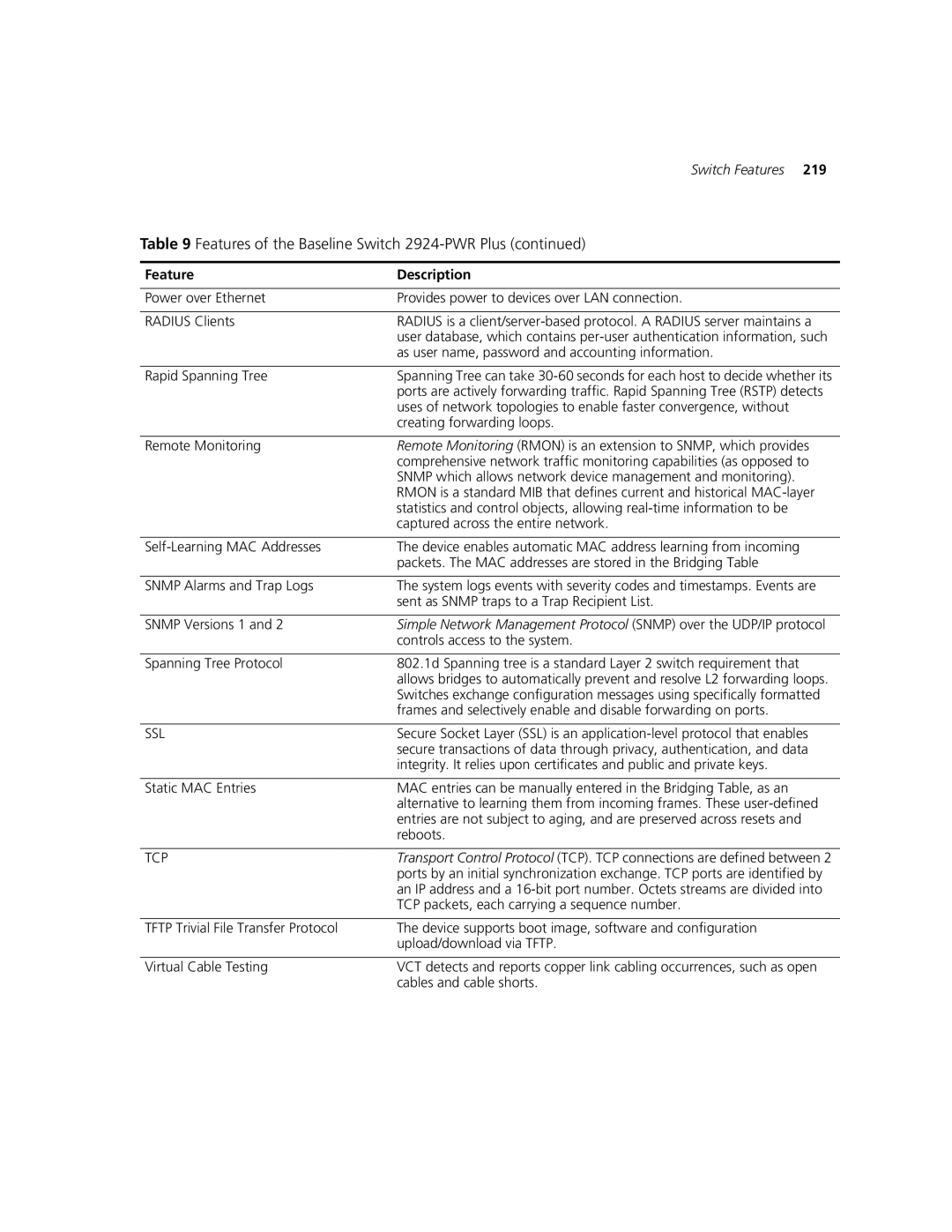Switch Features 219
Table 9 Features of the Baseline Switch 2924-PWR Plus (continued)
Feature | Description |
|
|
Power over Ethernet | Provides power to devices over LAN connection. |
|
|
RADIUS Clients | RADIUS is a |
| user database, which contains |
| as user name, password and accounting information. |
|
|
Rapid Spanning Tree | Spanning Tree can take |
| ports are actively forwarding traffic. Rapid Spanning Tree (RSTP) detects |
| uses of network topologies to enable faster convergence, without |
| creating forwarding loops. |
|
|
Remote Monitoring | Remote Monitoring (RMON) is an extension to SNMP, which provides |
| comprehensive network traffic monitoring capabilities (as opposed to |
| SNMP which allows network device management and monitoring). |
| RMON is a standard MIB that defines current and historical |
| statistics and control objects, allowing |
| captured across the entire network. |
|
|
The device enables automatic MAC address learning from incoming | |
| packets. The MAC addresses are stored in the Bridging Table |
|
|
SNMP Alarms and Trap Logs | The system logs events with severity codes and timestamps. Events are |
| sent as SNMP traps to a Trap Recipient List. |
|
|
SNMP Versions 1 and 2 | Simple Network Management Protocol (SNMP) over the UDP/IP protocol |
| controls access to the system. |
|
|
Spanning Tree Protocol | 802.1d Spanning tree is a standard Layer 2 switch requirement that |
| allows bridges to automatically prevent and resolve L2 forwarding loops. |
| Switches exchange configuration messages using specifically formatted |
| frames and selectively enable and disable forwarding on ports. |
|
|
SSL | Secure Socket Layer (SSL) is an |
| secure transactions of data through privacy, authentication, and data |
| integrity. It relies upon certificates and public and private keys. |
|
|
Static MAC Entries | MAC entries can be manually entered in the Bridging Table, as an |
| alternative to learning them from incoming frames. These |
| entries are not subject to aging, and are preserved across resets and |
| reboots. |
|
|
TCP | Transport Control Protocol (TCP). TCP connections are defined between 2 |
| ports by an initial synchronization exchange. TCP ports are identified by |
| an IP address and a |
| TCP packets, each carrying a sequence number. |
|
|
TFTP Trivial File Transfer Protocol | The device supports boot image, software and configuration |
| upload/download via TFTP. |
|
|
Virtual Cable Testing | VCT detects and reports copper link cabling occurrences, such as open |
| cables and cable shorts. |
